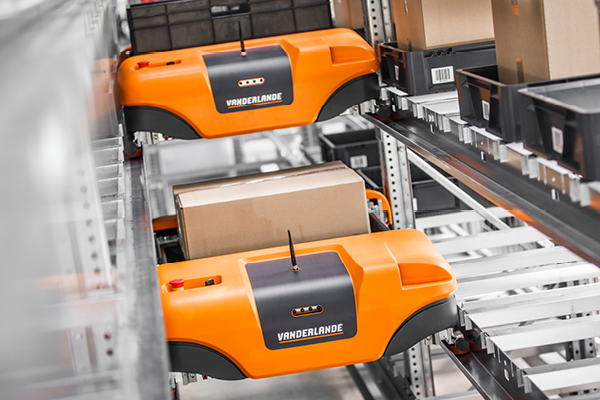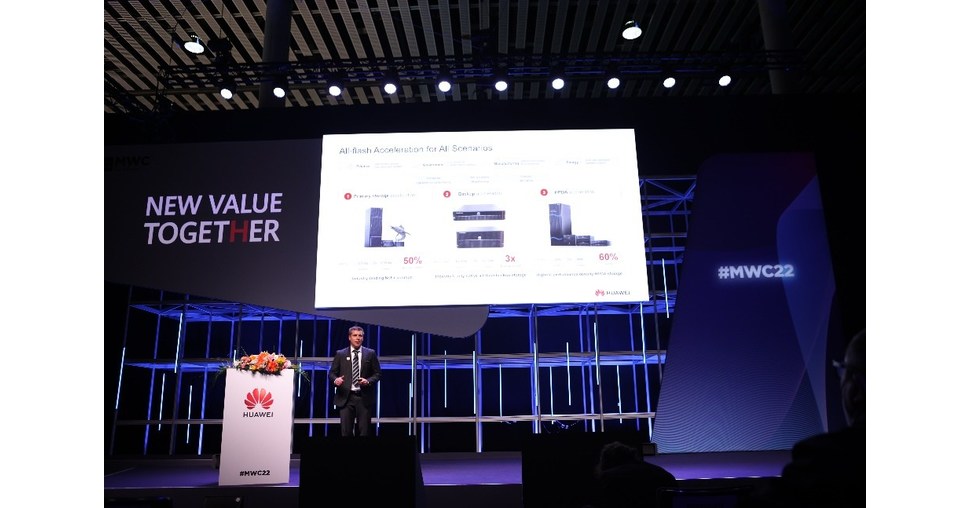MIAMI AND TORONTO–(BUSINESS WIRE)–March 16, 2022–
XTM, Inc. (“XTM” or the “Company” ) (QB:XTMIF / CSE:PAID / FSE:7XT), a Miami and Toronto-based Fintech company in the neo-banking space, providing mobile banking and payment solutions worldwide, is pleased to announce the deployment of Apple Pay and Google Pay for users of the US Today program.
program.
This press release is multimedia. Read the full press release here: https://www.businesswire.com/news/home/20220316005603/en/
XTM launches Apple and Google Pay on its US Today digital payment solution (Photo: Business Wire)
digital payment solution (Photo: Business Wire)
Apple Pay and Google Pay allow all Today Card holders to use their Apple or Android devices to make point-of-sale (“POS”) payments. At checkout, the merchant invites the customer to hold their activated device near the merchant’s payment terminal or reader and the payment will be made securely using NFC technology. Apple says Apple Pay is already accepted at more than 90% of US retailers.
As previously announced, XTM has worked diligently on rolling out over 100,000 mobile wallets and by adding Apple Pay and Google Pay to the Today program, it will not only improve the offering with more convenience, but it will boost POS spending and will allow XTM to increase its interchange revenue percentage when calculated as a percentage of gross dollar value (“GDV”).
“We have two main priorities – our customers and our shareholders – critical to our success,” said Marilyn Schaffer, CEO of XTM. “Providing the best customer experience and offering convenient and secure payment options to all Today program members addresses both priorities, driving happy customers and higher revenue.”
About XTM
XTM, www.xtminc.com, is a Miami and Toronto-based fintech innovator in the neo-banking space, helping businesses and service workers in the hospitality and personal care space to spread and access salaries and rewards earned. XTM’s Today solution, consisting of a free mobile app and a Visa or Mastercard debit card with free banking features, is used by thousands of restaurants, salons and employees in Canada and the United States. United. XTM is a global card issuer and real-time payment specialist. Our technology is used free of charge by restaurants, salons and service personnel to automate and accelerate access to earned salary and gratuities, increasing time and attendance and removing money from ecosystems. XTM’s Today solution improves operational efficiency and delivers a tailored user experience designed specifically for service workers.
solution, consisting of a free mobile app and a Visa or Mastercard debit card with free banking features, is used by thousands of restaurants, salons and employees in Canada and the United States. United. XTM is a global card issuer and real-time payment specialist. Our technology is used free of charge by restaurants, salons and service personnel to automate and accelerate access to earned salary and gratuities, increasing time and attendance and removing money from ecosystems. XTM’s Today solution improves operational efficiency and delivers a tailored user experience designed specifically for service workers.
This press release contains “forward-looking information” and “forward-looking statements” within the meaning of applicable securities laws (the “forward-looking statements”), within the meaning of applicable Canadian securities laws, including the expected performance of XTM, the expectation that companies that XTM does business with or has committed to do business with will do so within the expected timeframe, the continued trend towards electronic payment methods, that integrations will entice new business owners to use the Today program, and XTM’s terms and conditions and earnings. Forward-looking statements are statements that are not historical facts and are generally, although not always, identified by words such as “expect”, “plan”, “anticipate”, “project”, “target”. , “potential”, “schedule”. “, “expect”, “budget”, “estimate”, “intend” or “believe” and similar expressions or their negative connotations, or that events or conditions “will”, “would”, “could”, “could”, “should” or “could” happen. Although XTM can do its best to estimate when businesses will reopen or return to pre-Covid 19 levels of activity, there is no guarantee that this will happen. will occur within the time frame anticipated by the Company or as may be appropriate. All such forward-looking statements are based on the opinions and estimates of management as of the date such statements are made. Such forward-looking statements are made as of the date of this release. Readers are cautioned not to place undue reliance on forward-looking statements, as there can be no assurance that the future circumstances, results or results anticipated or implied by such forward-looking statements will occur or that the plans, intentions or expectations regarding the on which the forward-looking statements are based will occur.
CSE has not approved or disapproved of the contents of this press release, and CSE accepts no responsibility for the adequacy or accuracy of this release.
See the source version on businesswire.com: https://www.businesswire.com/news/home/20220316005603/en/
CONTACT: For more information, please see:
xtminc.com
or contact:
Marilyn Schaffer
416.260.1641
KEYWORD: UNITED STATES NORTH AMERICA CANADA FLORIDA
KEYWORD INDUSTRY: MOBILE/WIRELESS TECHNOLOGY RETAIL OTHER BUSINESS SERVICES TRAVEL FINANCING BANKING RESTAURANT/BAR PROFESSIONAL SERVICES OTHER TECHNOLOGY OTHER BUSINESS SOFTWARE DATA MANAGEMENT SECURITY
SOURCE: XTM, Inc.
Copyright BusinessWire 2022.
PUBLICATION: 03/16/2022 08:30 / DISK: 03/16/2022 08:32
http://www.businesswire.com/news/home/20220316005603/en
 MIAMI AND TORONTO–(BUSINESS WIRE)–March 16, 2022– XTM, Inc. (“XTM” or the “Company” ) (QB:XTMIF / CSE:PAID / FSE:7XT), a Miami and Toronto-based Fintech company in the neo-banking space, providing mobile banking and payment solutions worldwide, is pleased to announce the deployment of Apple Pay and Google Pay for users of the US Today™ program. This […]]]>
MIAMI AND TORONTO–(BUSINESS WIRE)–March 16, 2022– XTM, Inc. (“XTM” or the “Company” ) (QB:XTMIF / CSE:PAID / FSE:7XT), a Miami and Toronto-based Fintech company in the neo-banking space, providing mobile banking and payment solutions worldwide, is pleased to announce the deployment of Apple Pay and Google Pay for users of the US Today™ program. This […]]]> The global chatbot market is expected to reach a valuation of USD 102.29 billion by 2026, registering a CAGR of 34.75% over the forecast period 2021-2026. Efficiency. According to the MIT Technology Study, up to 90% of companies reported faster complaint resolution with bots. Advances in natural language processing (NLP) have made chatbots more accurate, […]]]>
The global chatbot market is expected to reach a valuation of USD 102.29 billion by 2026, registering a CAGR of 34.75% over the forecast period 2021-2026. Efficiency. According to the MIT Technology Study, up to 90% of companies reported faster complaint resolution with bots. Advances in natural language processing (NLP) have made chatbots more accurate, […]]]> By Vanderland · March 7, 2022 The explosion of e-commerce has placed disproportionate demands on retailers’ order fulfillment operations. Whether it’s reduced delivery expectations for consumers, dynamic inventory turnover and growth, changing SKU speeds, or high return volumes, warehouse operators are re-evaluating their automation options. Shuttle-based automated storage and retrieval (AS/RS) systems for goods-to-person (GtP) […]]]>
By Vanderland · March 7, 2022 The explosion of e-commerce has placed disproportionate demands on retailers’ order fulfillment operations. Whether it’s reduced delivery expectations for consumers, dynamic inventory turnover and growth, changing SKU speeds, or high return volumes, warehouse operators are re-evaluating their automation options. Shuttle-based automated storage and retrieval (AS/RS) systems for goods-to-person (GtP) […]]]>
 Join today’s top leaders online at the Data Summit on March 9. Register here. This article was written by Yaniv Iarovici, IoT Segment Marketing Director. The space race is heading into new territory, and there’s no room for error. Initiatives can include expensive one-off missions — such as NASA’s $10 billion James Webb Space Telescope […]]]>
Join today’s top leaders online at the Data Summit on March 9. Register here. This article was written by Yaniv Iarovici, IoT Segment Marketing Director. The space race is heading into new territory, and there’s no room for error. Initiatives can include expensive one-off missions — such as NASA’s $10 billion James Webb Space Telescope […]]]> The rise of 5G, Internet of Things (IoT) and artificial intelligence (AI) applications has led to an increase in data in finance, government and manufacturing sectors. Therefore, storage systems face higher demands than ever. Traditional systems cannot provide the service and operating expense (OPEX) performance necessary to keep IT systems online at all times and […]]]>
The rise of 5G, Internet of Things (IoT) and artificial intelligence (AI) applications has led to an increase in data in finance, government and manufacturing sectors. Therefore, storage systems face higher demands than ever. Traditional systems cannot provide the service and operating expense (OPEX) performance necessary to keep IT systems online at all times and […]]]> World leader in advanced connectivity to deliver PremiumEuropean car manufacturer with next-generation telematics SEOUL, February 25, 2022 – LG Electronics (LG) continues to up the ante in the automotive connectivity market with recent deals to supply 5G telematics solutions to a high-end European automaker. Already an established player in telematics, an area that combines multiple […]]]>
World leader in advanced connectivity to deliver PremiumEuropean car manufacturer with next-generation telematics SEOUL, February 25, 2022 – LG Electronics (LG) continues to up the ante in the automotive connectivity market with recent deals to supply 5G telematics solutions to a high-end European automaker. Already an established player in telematics, an area that combines multiple […]]]> There are a handful of cloud services available to Linux users that provide native apps. Dropbox is one of the oldest and most popular. Then there’s Mega and pCloud. Google shamelessly decided not to create a Google Drive client for Linux. You can also Self-hosted Nextcloud or Seafile, but it’s not everyone’s cup of tea. […]]]>
There are a handful of cloud services available to Linux users that provide native apps. Dropbox is one of the oldest and most popular. Then there’s Mega and pCloud. Google shamelessly decided not to create a Google Drive client for Linux. You can also Self-hosted Nextcloud or Seafile, but it’s not everyone’s cup of tea. […]]]>











 FEBRUARY 21, 2022 IN PARTNERSHIP WITH Monday is back 😭 And Twitter still doesn’t give us an edit button. The platform, however, recently rolled out a new feature that allows users to pin up to 6 chats in their DMs. This feature was previously available to Twitter Blue followers, but now anyone can access it […]]]>
FEBRUARY 21, 2022 IN PARTNERSHIP WITH Monday is back 😭 And Twitter still doesn’t give us an edit button. The platform, however, recently rolled out a new feature that allows users to pin up to 6 chats in their DMs. This feature was previously available to Twitter Blue followers, but now anyone can access it […]]]>








 on Busha. Join over 300,000 Nigerians already using Busha.
on Busha. Join over 300,000 Nigerians already using Busha. 




 As more and more of our world becomes digital, the tangible impacts and externalities of our daily lives become increasingly abstract. But at the end of the day, as easy as it is to forget, the internet is not made up of ones and zeros flying through the atmosphere, but of wires running across the […]]]>
As more and more of our world becomes digital, the tangible impacts and externalities of our daily lives become increasingly abstract. But at the end of the day, as easy as it is to forget, the internet is not made up of ones and zeros flying through the atmosphere, but of wires running across the […]]]> Paid feature In a tech industry as complex as this, it pays to keep things simple where you can. Databases are no exception. So why do cloud service providers offer multiple databases for different tasks when one was enough before? This article examines how traditional SQL relational database systems have evolved to serve as simpler […]]]>
Paid feature In a tech industry as complex as this, it pays to keep things simple where you can. Databases are no exception. So why do cloud service providers offer multiple databases for different tasks when one was enough before? This article examines how traditional SQL relational database systems have evolved to serve as simpler […]]]>